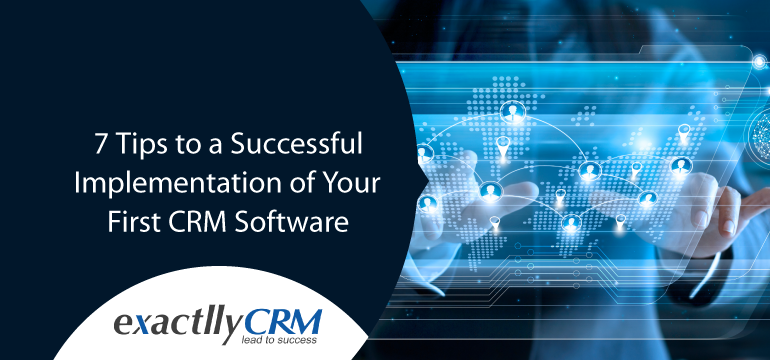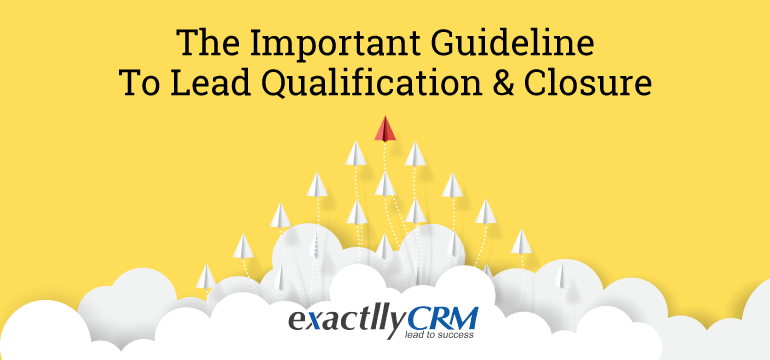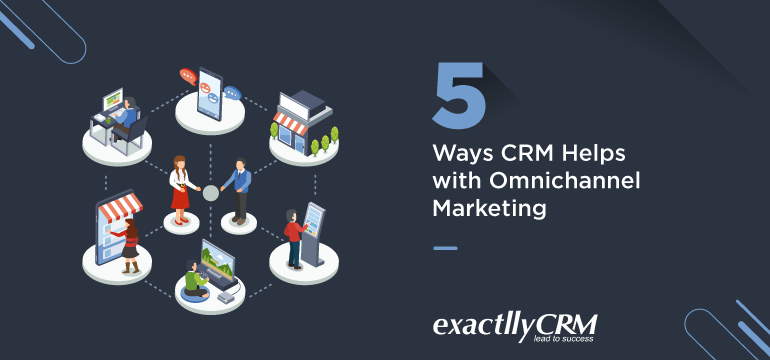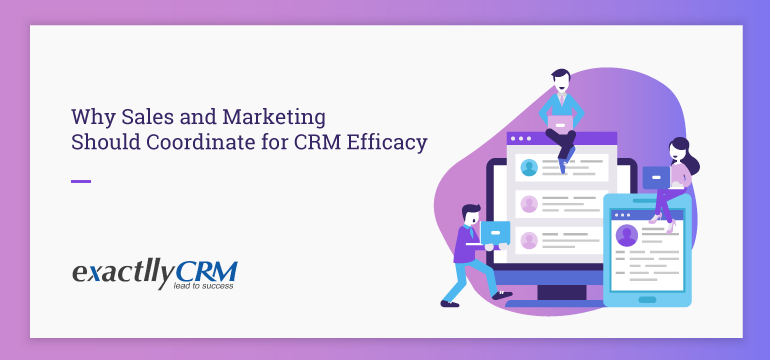7 Tips to a Successful Implementation of Your First CRM Software

If you have taken the decision to adopt and implement your first CRM software, you must know of its advantages by now. It is no surprise that Customer Relationship Management solutions are changing the way organizations execute their sales and marketing processes. However, this change comes at a cost that must be kept in mind prior rolling out the system with full force.
Taking a call to upgrade the way in which sales and marketing teams of a company have been previously operating, must be carried out with utmost care and must ensure an increase in productivity. Most systems fail to make an impact due to the lack of a CRM implementation strategy in place, the end result of which is a perfunctory attitude towards an expensive and fully equipped solution that superficially exists within the organization’s framework.
Be it due to the lack of effectiveness of the new interface, or the inadequacy of the backend team to provide technical support, it is highly disheartening for the corporate administration to encounter failure when implementing its first CRM software. In order to avert such a situation, here are a few propositions to keep in mind.
1. Get the ‘right’ CRM System –
The most crucial factor that will determine successful implementation of your CRM software is the quality of the software and the challenges it helps overcome through automation of pivotal transactions. Before rolling out the system, it is important that the platform is tested as per the requirements of employees and the standards of the organization.
Make sure your first CRM software is market-oriented to amplify customer retention and user-friendly enough to allow for effective data accessibility. Opt for a service provider that is experienced in the field and has a track record of providing installation facilities, familiarization training and timely support. Both, the technology as well as the provider will play an integral part in forming the bedrock of the system.

2. Ensure Administrative Involvement:
A discussion on the CRM implementation strategy will allow for the briefing of management executives prior to executing the software integration process. Having the support of senior executives in the form of capital investment as well as at the execution stage will help strengthen the belief of the general workforce during the changeover.
Having the leadership committed to the new system ensures that it is adopted at a faster pace and with lesser resistance. Usually, it is a good idea for the administration to employ a project manager to overlook the implementation process. This will not only provide credibility to the project but will also ensure that the rollout is carried out in a timely and systematic manner.
3. Express the Importance of CRM:
Communicating the need for a CRM system is essential, as it provides employees with a reason to accept the transition. Expressing the benefits of how automation and centralized data networking features would reduce the workload and simplify operations will motivate employees to embrace the change.
Another way to get the message across would be to carry out a presentation with the representatives of individual teams, explaining various features of the software and the manner in which they diminish the workload for employees and impact the enterprise by accentuating business growth.

4. Communicate Your CRM Strategy:
Since a CRM implementation strategy engages the entire organization as a collective group, it is imperative that you communicate the measures that would be reinforced to do the needful. Allowing for people to be involved in the process keeps them interested and does away with the element of surprise in encountering any challenges that may come their way for the duration of the familiarization process.
Ideally, your first CRM software should be rolled out in phases, since it is going to be a learning process for everyone involved. This also ensures that the plan doesn’t backfire at any time and the progress of the system can be monitored efficiently.
The preliminary phase should limit the capabilities of the software to avoid overwhelming the training process. The advanced features of the software can be gradually phased in during the later stages of implementation.
5. Discuss Usage Guidelines:
Keep in mind that enforcing a software and utilizing it are two distinct concepts. How you capitalize on your CRM solution will greatly dictate its success in the long haul. Thus, setting up certain guidelines for usage of the software would provide clarity for the users and streamline the way in which sales operations progress.
Setting up procedures for basic operations such as how to generate analysis reports, enter transactional data and register new sales, will avoid discrepancies in the data compiled from multiple sources. This, in turn, will create uniformity and continuity throughout the general workflow system.

6. Implement an Employee Training Program:
It comes as no surprise that advancement is accepted differently by different people. While some may readily embrace a new CRM software, others might be skeptical in using it frequently. To avoid such skepticism from your employees, a detailed training program which would assist them in operating the system along the provided guidelines, would prove to be quite beneficial.
Regardless of whether training is outsourced or provided by in-house executives, the quality of training must not be compromised upon. Most employees tend to avoid asking for help, fearing humiliation from their colleagues and subordinates.
Having a training agenda which promotes employee interaction can assist in providing a platform for learning and discussions.
7. Provide Technical Support:
A CRM system is essentially a form of technology, and like any kind of technology, it also requires technical support from a team of efficient and experienced personnel. Without the support of your IT executives, overcoming glitches that may be frequently experienced in day to day working might seem tedious and disruptive.
Ensuring that a designated IT team is deployed in-house or through the service provider, makes up for any loss of time or resources that the company would have encountered due to a system malfunction.

Incorporating a CRM solution within an organization is a deeply rooted investment for the future that must not be taken lightly. In the end, it is the execution of the change will determine the extent to which the software has been successful in enhancing operational turnover for the enterprise. Wants to know more about exactllyCRM? Feel free to Contact Us and get a Free Demo.






